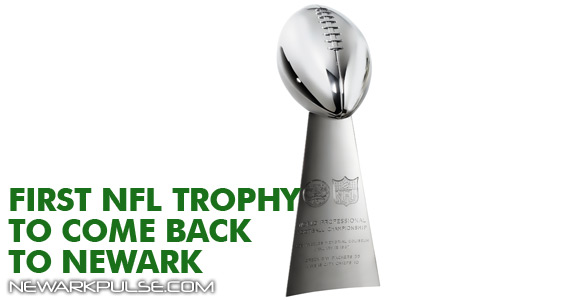First NFL Trophy Comes Back to Newark
The Superbowl is coming to NJ in just two months, but so is the first Vince Lombardi Trophy - the iconic symbol of the NFL Super Bowl Championship.
This trophy was first handcrafted in Newark in 1967 at Tiffany & Co.'s silver factory. It was at a time when the City of Newark was the thriving center of the precious metal industry in the United States and home to the design workshops of scores of famed jewelry goldsmiths and silversmiths such as Tiffany & Co. and Krementz.
The original trophy, named after the Packers' legendary coach who was born in New Jersey 100 years ago, will be on view for three months at the Newark Museum - January 8, 2014 through March 30, 2014 - to mark the playing of Super Bowl XLVIII at MetLife Stadium in East Rutherford on February 2, 2014. It is a centerpiece of the dazzling exhibition City of Silver and Gold from Tiffany to Cartier.
City of Silver and Gold traces Newark's history beginning with small-scale producers such as Baldwin & Co. in the 1840s, which made both silver objects for domestic use as well as some gold jewelry. The city's precious metal industry boomed during the years after the Civil War (1861-1865), fueled by discoveries of gold and silver deposits in the United States and the influx of skilled metalworkers from Germany and elsewhere in Europe. By the time of the American Centennial in 1876, Newark's three main industries had arisen - beer, leather and precious metals.
Tiffany & Co. opened its first factory in Newark in the 1870s and built a massive new factory in the city's north end that opened in 1894. Some of Tiffany & Co.'s greatest objects came out of their Forest Hill shop in Newark. Four unique masterpieces from Tiffany's Newark plant will be on display: a pair of massive candelabras made for the 1900 World's Fair in Paris; a pair of sleek art-deco candelabras made for the New York World's Fair in 1939; a jewel-encrusted coffee set in the "Viking" style made for the Buffalo World's Fair in 1901; and a unique solid-gold coffee set given by a husband to his wife in 1897 for their golden wedding anniversary.
On the eve of the Great Depression, Newark's jewelry industry was providing 90 percent of the gold jewelry in the American market. Dozens of factories, from small to huge, produced 14 and 18-karat gold jewelry and accessories six days a week, and Newark became the largest consumer of small colored gemstones and diamonds in the United States.



